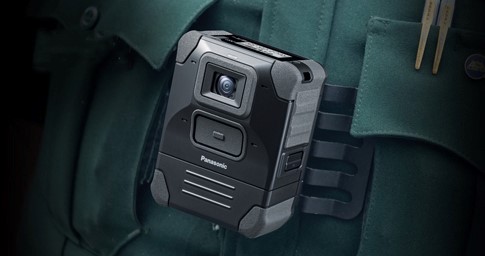The content herein represents the view of author and should not be construed as being endorsed by or representative of IACP or Police Chief.
The face of policing in the United States has been changing over the last decade, largely thanks to the increased deployment of advanced technology. The use of city-wide video surveillance networks in collaboration with urban businesses, schools, and health care facilities have provided a model for public/private partnerships in reducing crime and promoting public safety. Digitally enhanced 911 systems are bringing sophisticated emergency communication applications to officers in the field to help them engage in proactive crime prevention, and local law enforcement agencies are becoming adept at fighting cybercrime and other computer-based attacks by using artificial intelligence and data analytics.
However, no law enforcement technology tool has received as much attention or scrutiny in 2020 as body-worn cameras (BWCs). These compact, rugged cameras have proved potentially transformational as a tool for better police procedures by creating video records of how both the police and the community respond to incidents and encounters.
A survey conducted by the Police Executive Research Forum (PERF) in April 2018, entitled Cost and Benefits Of Body-Worn Camera Deployments, was one of the largest and most comprehensive surveys to date of U.S. law enforcement agencies regarding their deployments of BWCs.1 This survey revealed a number of important findings:
-
-
- More than one-third of U.S. law enforcement agencies have already deployed BWCs to some or all of their officers, and another 50 percent currently have plans to do so.
- A large majority of departments with BWCs are happy with the cameras, and more than 85 percent of them would recommend them to other police agencies.
- There was a variation in how widely agencies have deploy BWCs within the department. More than 40 percent of agencies reported that they have given BWCs to all sworn officers, but some agencies have made only partial deployments. For example, three agencies that PERF studied more closely had only equipped a fraction of their police force with BWCs: Phoenix, Arizona (10 percent); Dallas, Texas (30 percent); and Mesa, Arizona (44 percent).
- For most agencies, the cost of BWCs are quite low—approximately $5,000 per year or less. (However, the costs are low because most police departments either have a small number of officers, or they are only deploying BWCs to some of their officers.)
- The most common reason given for adopting BWCs, (more than 9 in 10 agencies) was to promote accountability, transparency, and legitimacy.
-
While this survey demonstrated that law enforcement and public safety agencies have a strong desire to build trust and foster relationships with their communities, BWC technology is not a solution for every community issue. However, proponents of BWCs are adamant that the benefits are certainly quantifiable.
A recent research piece, “Body-Worn Cameras: What the Evidence Tells Us,” completed by the National Institute of Justice, points to five major benefits BWCs may offer law enforcement:
-
-
- Better transparency. BWCs may result in better transparency and accountability. Video footage captured during community-officer interactions might provide better documentation to help confirm the nature of events and support accounts articulated by officers and community residents.
- Increased civility. BWCs may also result in higher rates of public compliance to officer commands during encounters and fewer complaints lodged against law enforcement. Community members often change their behavior toward officers when they are informed that the encounter is being recorded. This may prevent certain situations from escalating to levels requiring the use of force and also improve interactions between officers and community members.
- Quicker resolution. BWCs may lead to a faster resolution of community member complaints and lawsuits. Investigations of cases that involve inconsistent accounts of the encounter, from both the officers and community members, are often found to be “not sustained” and are subsequently closed when there is no video footage nor independent or corroborating witnesses. Video captured by BWCs may help corroborate the facts of the encounter and lead to a quicker resolution.
- Corroborating evidence. Footage captured may also be used as evidence in arrests or prosecutions. Proponents have suggested that video captured by BWCs may help document the occurrence and nature of various types of crime, reduce the overall amount of time required for officers to complete paperwork for case files, corroborate evidence presented by prosecutors, and lead to higher numbers of guilty pleas in court proceedings.
- Training opportunities. The use of BWCs also offers potential opportunities to advance policing through training. Law enforcement trainers and executives can assess officer activities and behavior captured by BWCs through self-initiated investigations or those that result from calls for service. Finally, video footage can provide law enforcement executives with opportunities to implement new strategies and assess the extent to which officers carry out their duties in a manner that is consistent with the assigned initiatives.2
-
What About the Technology?
When it comes to technology deployment, law enforcement officials look for BWCs that are lightweight, comfortable to wear, and offer adequate battery life. Beyond that, many officers relinquish technical issues to the IT personnel at their departments when it comes to storage and retrieval.
When the Phoenix Police Department (PPD) asked its officers what BWC features they thought were most useful, they were insistent that the recording indicator be visible in the field, and that they have the ability to view recently recorded video footage on-site. They also wanted a wide field of vision in the area of 50 degrees. Additionally, the department wanted officers to have the ability to turn off any available night vision function and to be able to place the device at several locations, including the ear, shoulder, and lapel. Finally, there could not be more than two wires on the BWC, and it would need to have the capacity to automatically label video files with the date and time of the recording. The PPD tested different camera models, and the findings showed officers found camera features like the pre-record option on some cameras, which retains 30 seconds of video prior to an officer activating a recording, confusing. Many officers found this option to be a liability, according to a 2015 report evaluating the impact of BWCs.3
The spokesperson for one midwestern U.S. police agency stated,
Current BWC technology is largely intuitive and easy to deploy. The BWC requires only minimal training, because so little is expected of the officer, specifically to record video and dock the BWC daily to upload and charge. The pain points fall largely upon IT staff to deploy and maintain BWC inventory for records section personnel to review, redact, and share BWC video, and for Prosecutors to be able to watch all of the recorded agency video before trial.4
Finishing with Best Practices for BWCs
Before any BWC technology is selected and procured by an agency, establishing some basic best practices for policy and procedures is a must. The spokesperson refers to the PPCP approach:
-
-
- Planning – Review IACP/PERF/DOJ toolkit material, read peer-reviewed research, and canvas other agencies for best practices related to BWC deployment.
- Preparation – Spend a lot of time and resources training on the use of BWCs to ensure officers are comfortable and knowledgeable on their operation.
- Collaboration – Involve as many agency and community stakeholders as possible, including prosecutors, defense counsel, judges, the public, media, and officer union representatives to address potential issues and concerns related to BWC deployment.
- Process – Refine through testing before BWC deployment to eliminate most, if not all, “Day 2” disasters and help ensure that the program meets expectations at launch.
-
The spokesperson concluded by adding that there are a lot of good programs and policies across U.S. law enforcement agencies related to BWC deployment. It is a useful exercise to read more about them to better understand the positive impact BWCs can have on both law enforcement agencies and the public good.
|
Rob’s prior experience is in Law Enforcement with the Crestwood, Missouri Police Department, serving as the Deputy Chief of Police. He commanded the Enforcement Division of the police department, with additional responsibilities of management of the city computer network, to include mobile data computer operations. |
Notes:
1Police Executive Research Forum (PERF), Cost and Benefits of Body-Worn Camera Deployments (Washington, DC: PERF, April 2018).
2Brett Champman, “Body-Worn Cameras: What the Evidence Tells Us,” NIJ Journal 280 (January 2019):
3Charles M. Katz et al., Evaluating the Impact of Officer Worn Body Cameras in the Phoenix Police Department (Phoenix, AZ: Center for Violence Prevention & Community Safety, Arizona State University, 2014).
4Spokeperson for client agency, email, 2020.




